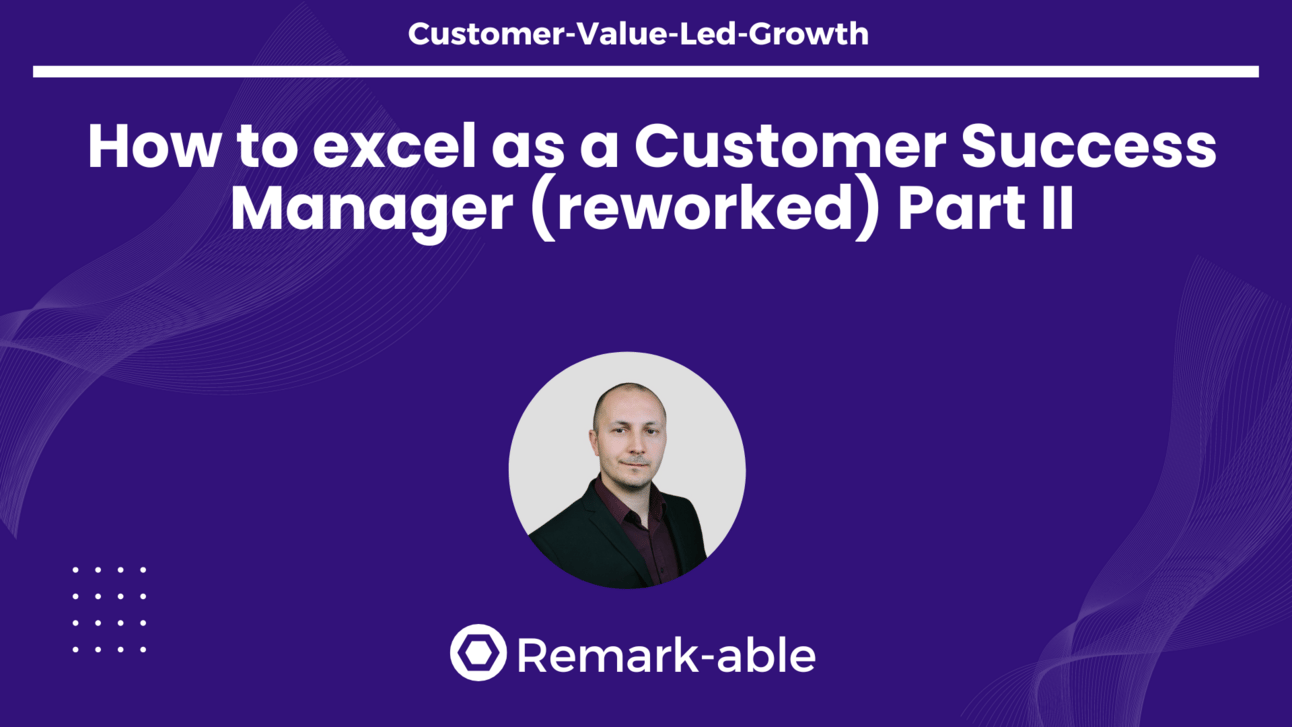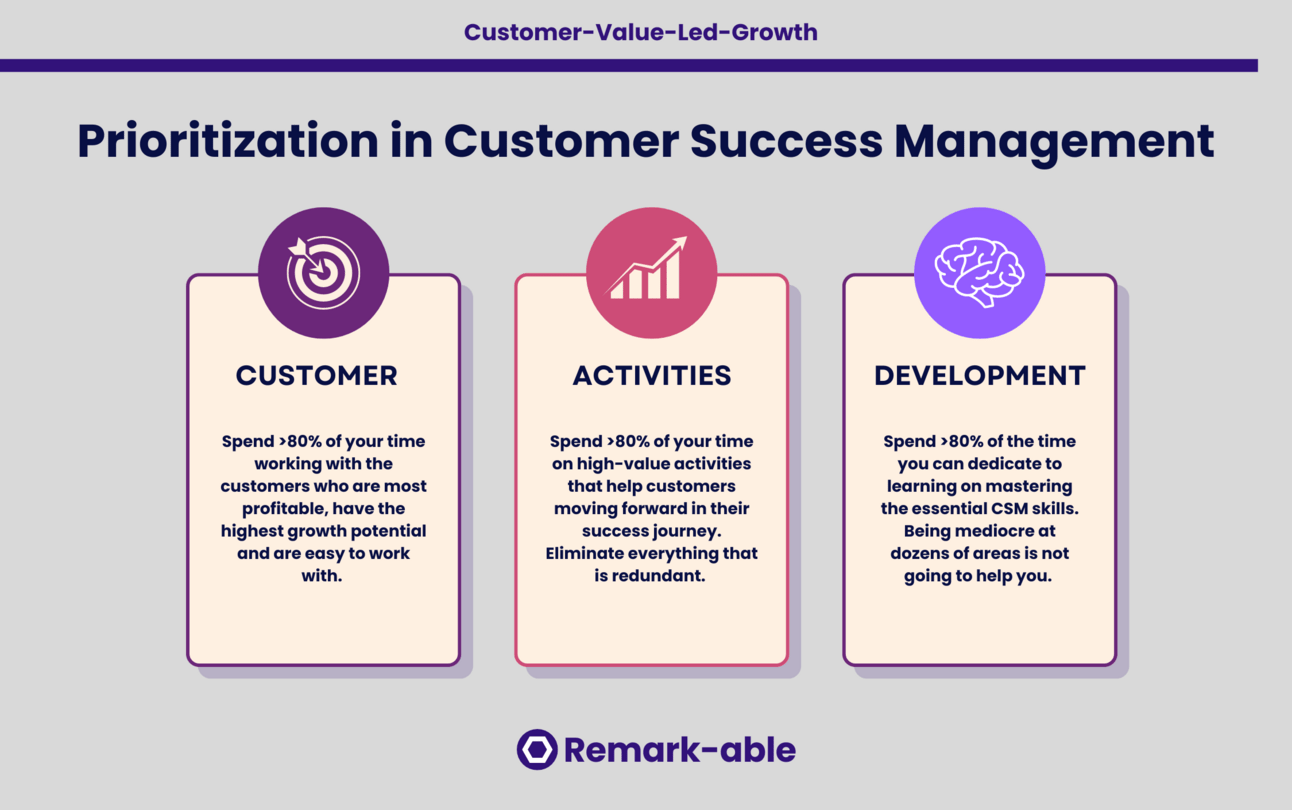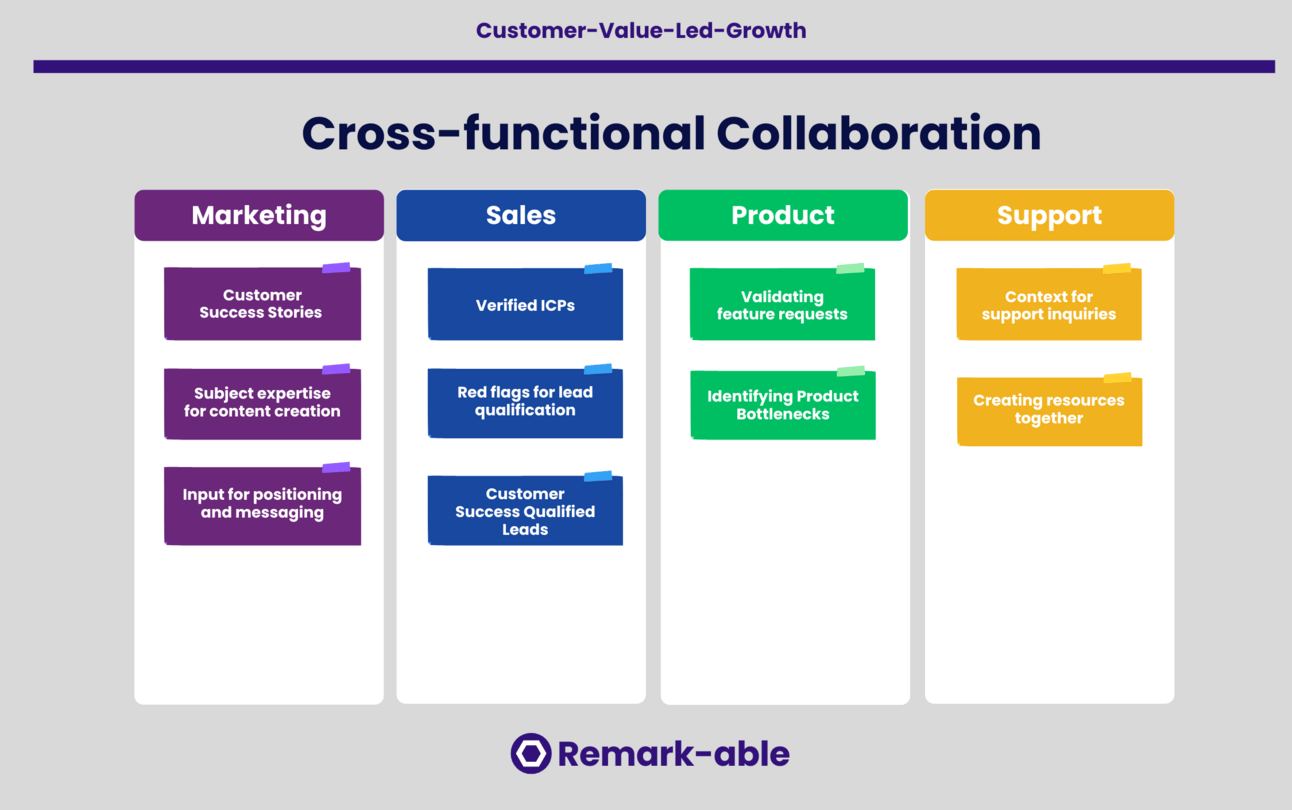
Hi, Markus here. Welcome to a free edition of the Customer-Value-Led-Growth Newsletter.
Every week, I share strategies, guides, and frameworks to help you create exceptional value for your customers and company.
If you need additional resources, check out these links:
In the last episode, I outlined the urgent need for CSM to reinvent itself.
Starting with a new mindset and building the knowledge required to deliver more value to customers.
In today’s episode, we will explore how to build the right skills, narrow your focus and change your environment to enhance your performance.

3. Skills
Customer Success Management is the most demanding role in SaaS. No other one has the same intensity and requires an equally broad skillset. However, not all of these skills have the same impact on your work. Here are the 3 most important ones to master:
3.1. Active Listening
It’s astonishing how many CSMs talk non-stop when they meet their customers. Your job is not to impress your customers with everything you possibly know.
It’s to help your customers accomplish their goals. A fundamental part of it is to understand your customers’ business and their needs. How could you possibly do that if customers can’t say a word?
This needs to stop. Every conversation with your customers should follow the 80/20 principle - you spend 80% of the time listening and only 20% talking.
Active listening means asking open questions and letting your customers walk you through their business, processes, and problems. Make your customers truly feel heard. You are your customers’ business therapist.
3.2 Problem-solving
There might be 5% of customers in your portfolio that don’t need your help at all. They are high performers and bought your product for the tech. These are the customers you can learn from.
The other 95% haven’t figured things out. They need help in solving their problems. That does not mean you are doing it for your customers. It means that you are giving them the tools to do it themselves.
All the content and services you provide for your customers are part of the solution - or they are not. If you don’t understand the problems customers need to solve or how to actually solve them you will fail.
3.3 Transferring knowledge
It does not matter how many services you provide. It does not matter how many pieces of content you create. It does not matter how many customers consume them.
The only thing that matters is that customers can implement their learnings. Common advice says that you should avoid using jargon in writing and talking. Ok, that’s a viable tip but at best the tip of the iceberg.
That’s why teachers pivoting into a CSM career have a massive advantage. They are trained and experienced in transferring knowledge.
If you don’t have that background, your best tools are putting yourself in the customers’ shoes and seeking feedback.
Writing from the customers’ POV lets you spot redundancies, reduce complexity, and focus on outcomes. Understanding what resonates, what’s unclear, and what’s missing from customer feedback gives you the input for progress.
4. Focus
If you are doing everything you could and should do you would have a 24/7/365 job. Customer Success Management is not a quantity game. It’s about breaking through the noise and scoring the big points.

4.1 Customers
As a CSM you naturally feel the urge to help people. Without a doubt, it’s a noble trait. The problem is that it’s sometimes firing back at you. Namely when you are working with customers that don’t want your help.
Well, at least not the way you give it. Customers that lack the basic skills and knowledge to work with you. Customers who are not willing to put in the effort or follow advice.
They are wasting everybody’s time and in the end, they will churn anyway. Instead, you should focus on your customers with the highest profitability, growth, and success potential.
The gains from working with these customers will easily exceed the potential losses from putting bad-fit customers on minimum support.
4.2 Activities
A 1000×0 is still 0. There’s no badge of honor for conducting the most customer meetings and writing the most E-mails. I’m not into business mantras but there’s one I believe in: “Deliver value with every interaction”
Assess all the things you are doing every single month and evaluate their impact. Eliminate everything redundant from the agenda. Replace meetings that could have been an E-mail with exactly that.
Scale everything from relatively small activities to entire processes if they are delivering the intend outcomes recurringly.
That includes turning live webinars into on-demand ones if participants give positive feedback and don’t raise additional questions.
This way, you will have more time for the services that move the needle the most.
4.3 Personal Growth
There’s an infinite amount of knowledge and 100s of skills you could acquire. But that does not mean you should. Instead of being mediocre in dozens of different disciplines you should strive to master the most valuable ones.
Learning how to code or engineering ChatGPT prompts are nice to haves but not more. They will certainly not compensate a lack in core skills like customer discovery and problem-solving.
5. Environment
Customer Success Management is the heart and the soul of every SaaS company. But it does not work in a vacuum. Growing your influence and building internal relationships are a pillar for your success.
5.1 Leadership
Your C-suite does not get the value of CSM? You are not alone. There are few companies where the CSM team is highly regarded. The problem has 3 different solutions:
do nothing about it and keep complaining
quit and check whether the grass is greener someplace else
raise awareness and change the perception
You’ve probably guessed it. The former 2 were not serious suggestions. The problem in CSM is that for the past decade, teams did a poor job of demonstrating the value they bring to the table.
Because they were talking about metrics the leadership does not care about like usage, adoption, or NPS. If you want to change your leadership’s perception of CSM you need to start talking about what they care about - your revenue impact.
5.2 Cross-functional collaboration

Customer Success is an outcome that requires a coordinated effort from product, marketing, sales, support, and success. Their problem is that 99% of SaaS companies are misaligned and every team sits in a silo.
Yes, it’s a leadership responsibility to unite all teams on a single mission and goal. But if it’s not happening at your company, you need to take matters in your own hands.
Unfortunately, there’s a major problem as you can’t hold anyone accountable for their (non-) contributions. That means you need to take a different road.
How can you e.g. prevent the Sales team from acquiring bad-fit customers? You help them to get in front of better buyers by providing them with the right data.
So they can (over-) achieve their quota and you get high-quality customers. A win-win for everybody. Likewise, your insights help every other teams to improve their performance as well.
Share this episode with a friend or colleague if you find it valuable 😃
